The Roadless tractor attraction
Posted by Chris Graham on 5th June 2020
Enthusiasts who like collectable workhorses won’t go far wrong with a Roadless tractor, especially the Fordson conversions. Jo Roberts explains the Roadless tractor attraction.
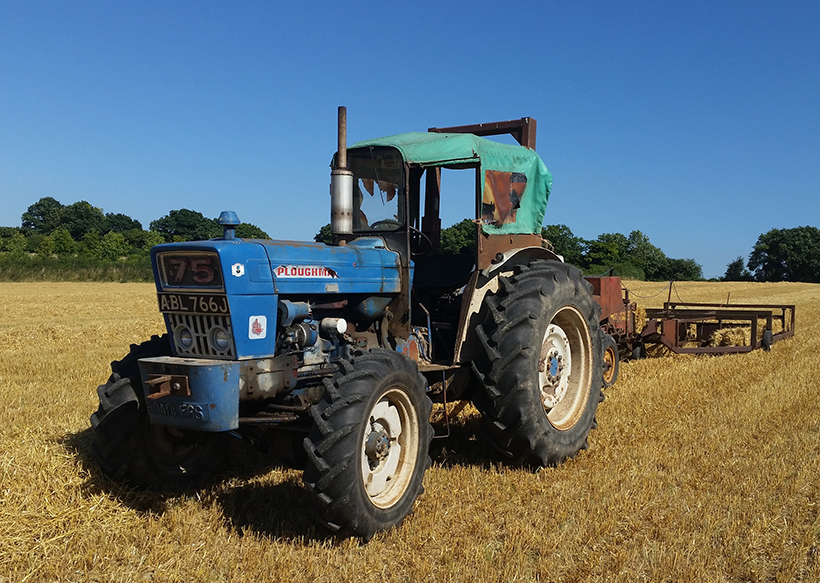
The Roadless tractor attraction: Ed Batchelor’s Roadless 75 was originally sold by Oakes of Hungerford, and is often used with a Ransomes plough which was sold via the same dealership.
The Roadless Fordson is an exciting machine; it takes the well-established Fordson name and puts some heavy-duty icing on top. It gives us a go-anywhere classic tractor, which is both highly collectable yet still more than capable of tackling most everyday farm or forestry tasks.
Looking at the Roadless tractor conversions, we can roughly divide them up into three categories; full track, half-track, and four-wheel-drive. Different makes of tractor were converted by Roadless, but by far its best-known conversions were based on Fordson tractors.
Roadless’ first conversion on a Fordson tractor resulted from a commission to provide a vehicle capable of working on a beach, for Margate Corporation. Roadless took a Standard Model N Fordson and converted it to run on full tracks, successfully turning a small, farm tractor into an all-terrain crawler.
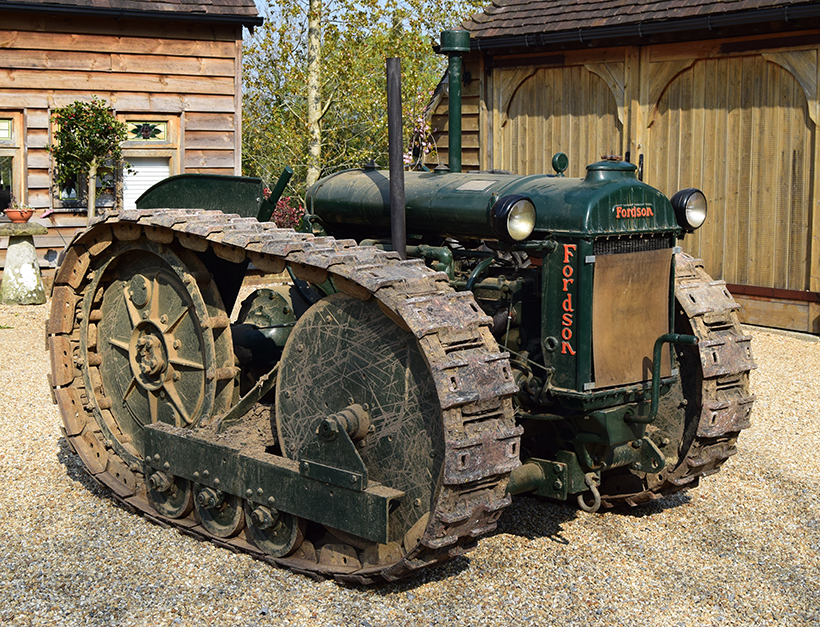
This 1941 Roadless tracked Fordson Model N was built with the military in mind, and was probably used on airfields for towing aircraft. Roadless was well known for its advances in track design, which incorporated rubber blocks to increase flexibility and reduce noise, wear and maintenance.
By 1931, Roadless conversions were approved by the Ford Motor Company, with Roadless agreeing to both supply Fordson Model N tractors as complete, tracked machines, and to sell the tracked equipment separately as a kit, for £180. This was to be the start of a long and successful relationship between Ford and Roadless, which continued right into the 1980s.
Notable example
Ross Bartlett, from Winchester, owns a beautiful example of a 1941 Fordson Model N which was converted into a full-track crawler by Roadless. Crawlers such as this were made in small numbers for military use, and only around 10 examples survive today.
“I believe they were used on airfields for towing planes,” says Ross. “They used a Fordson Standard N engine and gearbox, and they steer with a lever either side of the driver which acts as a brake on each rear drive wheel. They don’t have an independent clutch on each side like most crawlers. Instead, they solely rely on the rear differential. You sit over the axle, and the tractor has an industrial-style seating position and an industrial dash.”
Although the engine and gearbox are that of a standard Fordson, the extra grip that the tracks provide, mean that the engine doesn’t waste any power trying to gain purchase, and this gives the impression of increased power.
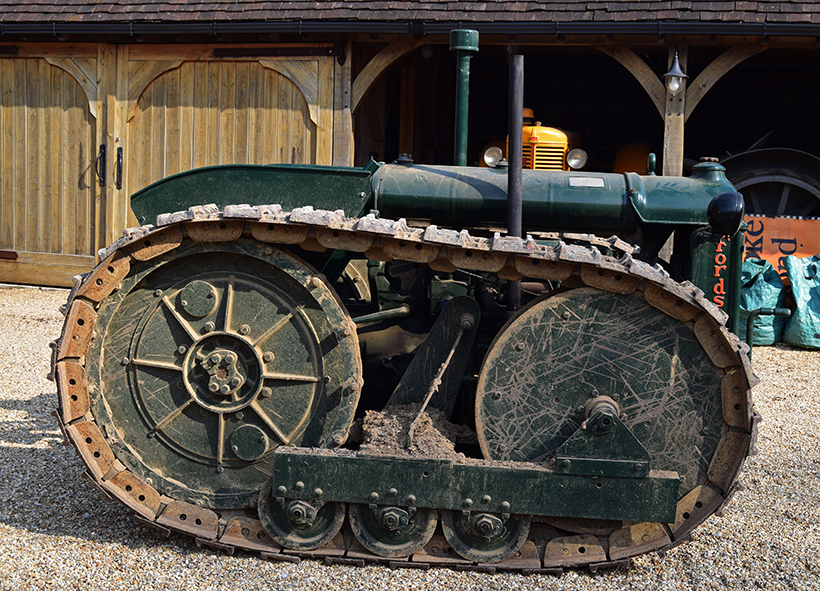
This handsome machine belongs to Ross Bartlett, and it’s thought that only around 10 such examples remain intact. It has a Standard N engine and gearbox, but it steers with levers either side of the driver, which act as brakes on each rear drive wheel.
“These machines have excellent traction,” explains Ross, “they can pull a three- or four-furrow plough, whereas the same tractor running on tyres might only pull a two-furrow plough”.
The history of Ross’ Roadless Model N is sadly unknown. It was purchased from the Malcolm Beaton sale in poor condition some 15 years ago, and was restored by Jim Sparks who owned it for many years. Ross purchased it from Jim’s son, Graham, in 2019.
Perfect timing!
The era of the Fordson Major E1A was a perfect time for Roadless. Many farmers of the period felt that their relatively small farm tractors couldn’t provide the level of traction required to work effectively with large implements on heavy or steep land. So, the concept of marketing 4WD conversions arrived at just the right time.
However, it wasn’t as if 4WD was a brand new concept; companies like Massey-Harris had produced its 4W GP tractor as far back as the early 1930s, but it wasn’t for another few decades that British farmers started believing that 4WD might represent the way forward. Tractor manufacturers here in the UK were still building two-wheel-drive tractors, gradually increasing horsepower but not traction, so the time was perfect for a company like Roadless to offer its conversions.
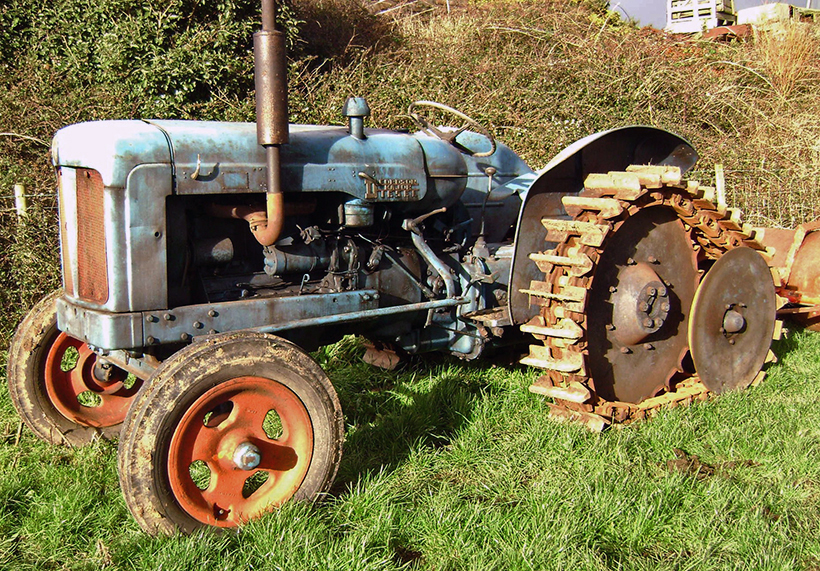
A Fordson Major converted by Roadless to run on half-tracks.
In 1956, the Roadless 4WD Fordson Major went on sale. This was based on an E1A skid unit, and utilised ex-military GMC lorry axles which were shortened to fit. Drive was taken from a transfer box mounted in between the rear transmission and the gearbox, then delivered to the front axle via a Hardy Spicer propeller shaft.
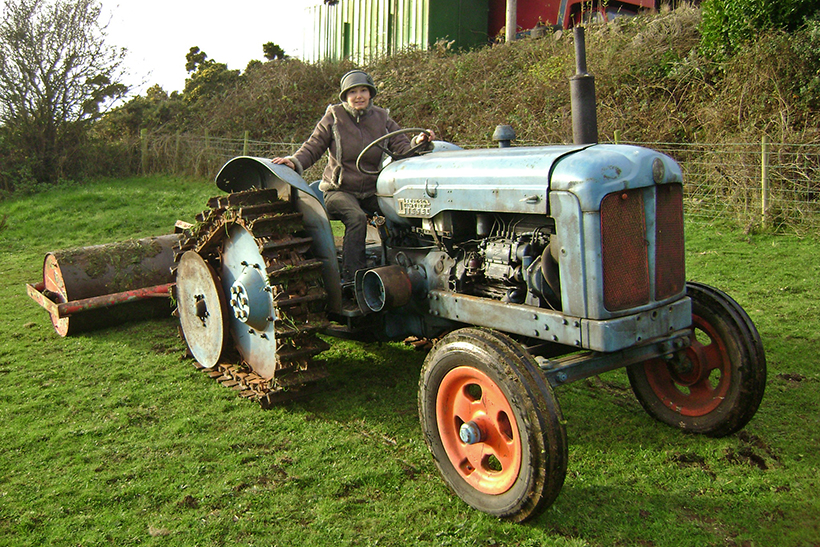
Roadless half-track conversions could be fitted either through the dealership or at home on the farm, and offered a simple and affordable way to boost traction without buying a larger tractor.
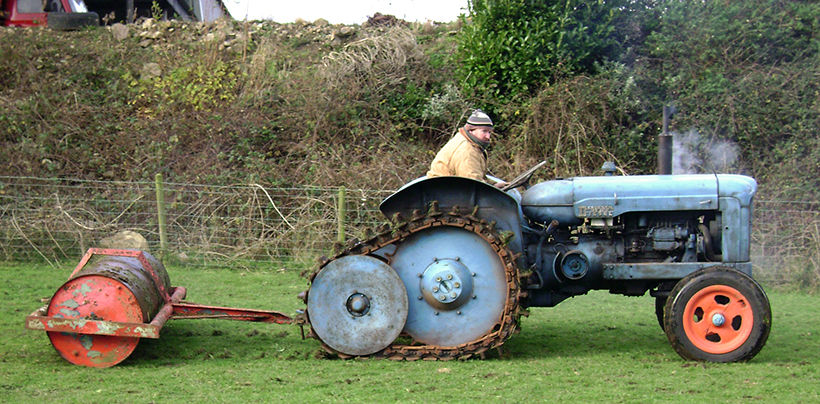
Fordson tractors are the most adapted of all tractors, and the multitude of different conversions that exist give great scope for collectors.
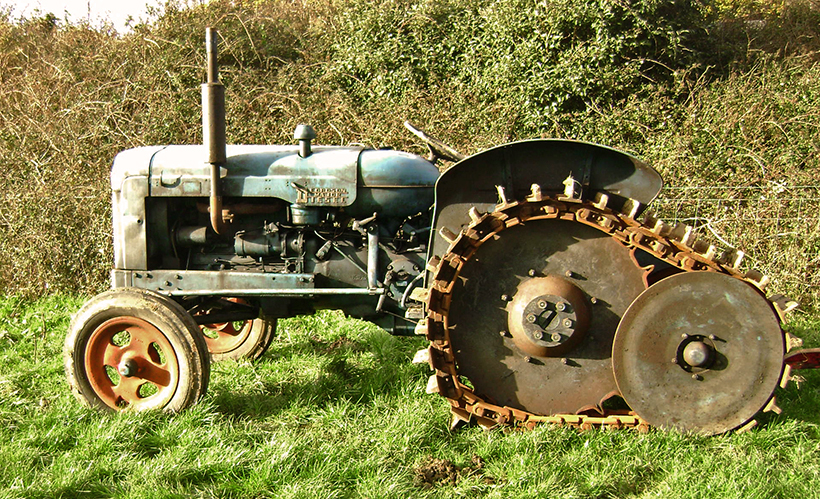
This was an era when farmers started finding that their small tractors weren’t quite up to the job of pulling heavier implements. The Roadless conversion option arrived at just the right time.
Manuel Roadless
On the Roadless Fordson Major, the four-wheel-drive system could be engaged and disengaged as required and, having smaller front wheels than its rival from County, the Roadless was more manoeuvrable, making it ideal for working in crop-fields and forests.
The earlier Roadless conversions all had ‘Manuel Roadless’ stamped on the axle. The name ‘Manuel’ comes from Roadless’ connection with Selene. The concept of using ex-army lorry axles to convert tractors to 4WD was initially the brainchild of Italian company, Selene, and it was under licence from Selene that Roadless could sell its Roadless Fordson Majors in Britain, Canada, and the US. Roadless bought axles from Selene and paid a royalty for each tractor built. The words ‘Manuel Roadless’ are seen on those front axles, with Manuel referring to the name of the son of Signor Selene.

The Roadless conversion transforms the old Super Major into a far larger-looking tractor. The words ‘Manuel Roadless’ are seen on the front axles that were bought in from Selene, with ‘Manuel’ referring to Signor Selene’s son’s name.
In 1958, Roadless offered its 4WD version of the Power Major and, in 1960, the 4WD Super Major was launched – again available as a complete tractor converted from new by Roadless, or as a conversion kit.
Roadless continued with 4WD conversions into the Ford 1000 series range of tractors and, in 1968, the Roadless 115 arrived, with its four, equally-sized wheels. This model continued in production until 1975. By the early 1980s, however, larger and more capable tractors were becoming widely available, and 4WD conversions of the sort produced by Roadless, weren’t as crucial as they had once been.
Meet the owners
Ed Batchelor, a tractor enthusiast based on the Hampshire Downs, has a collection of Roadless tractors which includes machines dating from the late-1950s to the mid-1970s. He works as a tester and engineer for various, off-highway vehicle manufacturers, but he also does some agricultural contracting work in his spare time, making use of his Roadless tractors for this, and other farm tasks.
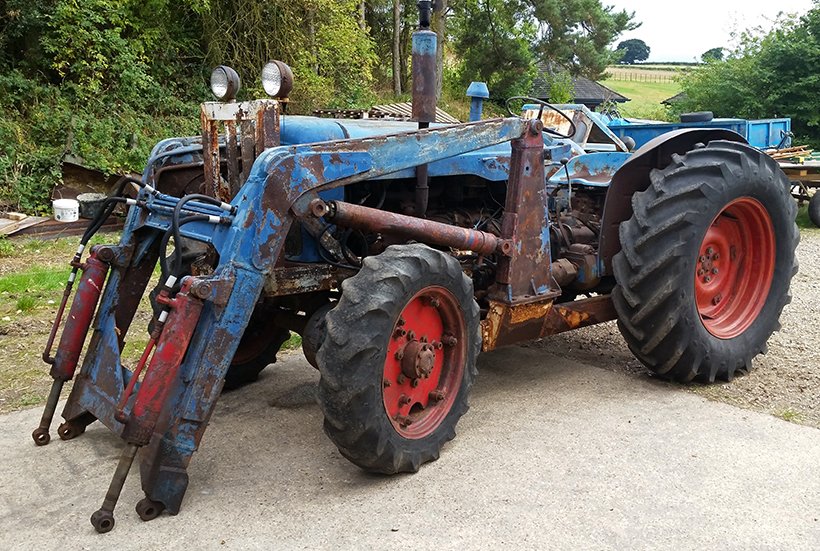
Ed Batchelor’s 1959 Roadless Major spent its working life in the USA, and was only recently brought back to the UK.
The oldest of Ed’s Roadless Majors is a 1959 model, which spent its working life in the US, and was only recently re-imported to the UK. Ed’s research revealed the tractor was sent new to America in 1959, and was converted to 4WD fairly early on in its life, using a Roadless kit that was sent out there and fitted by either the dealership or the owner. Roadless records show this kit was one of just six that were sent out to the States.
A non-runner
The tractor arrived in the UK as a non-runner, among a container-load of other tractors and parts, and Ed bought it in the hope that there wasn’t too much wrong with it. In the workshop, he discovered the engine had been taken apart at some point, and the timing marks had been misaligned. But, once this had been sorted out, the engine started and ran perfectly. Ed is planning to remove the loader and to fit a Cookes winch; he likes to give all of his tractors a job to do.
“We’ve always had Fordson tractors,” says Ed. “From an early age the 4WD variants appealed to me and, over the years, they have proved to be both useful tools and good investments.”
Ed also owns and works a Roadless 75, which also has an interesting back story. A friend, who once worked in the sales department for the dealership Oakes of Hungerford, used to talk about how he’d delivered this tractor to its first owners when it was new, and how he would like to buy it back. Years later, when Ed had long since lost touch with the friend, he saw an advert for a Roadless 75 for sale, which was relatively local.
While viewing the tractor, Ed noticed the Oakes’ dealership badge on it, and wondered if it might be that same tractor. So, having bought it, he did a bit of research, and found that it was! Today, Ed uses the 75 for topping and for haymaking, and he also ploughs with it using a four-furrow Ransomes TS90 – also supplied new by Oakes.
Genuine appreciation
Someone else who appreciates Roadless tractors is Anglesey-based collector, Alan Kelly. He’s owned several Roadless 4WD tractors over the years, and has nothing but good things to say about them. “When I was buying and selling tractors, Roadless tractors did well for me,” he explains. “They always sold for good money and I wish, with the benefit of hindsight, that I’d bought more of them and fewer other makes, like Fergies, which I never made much money on!”
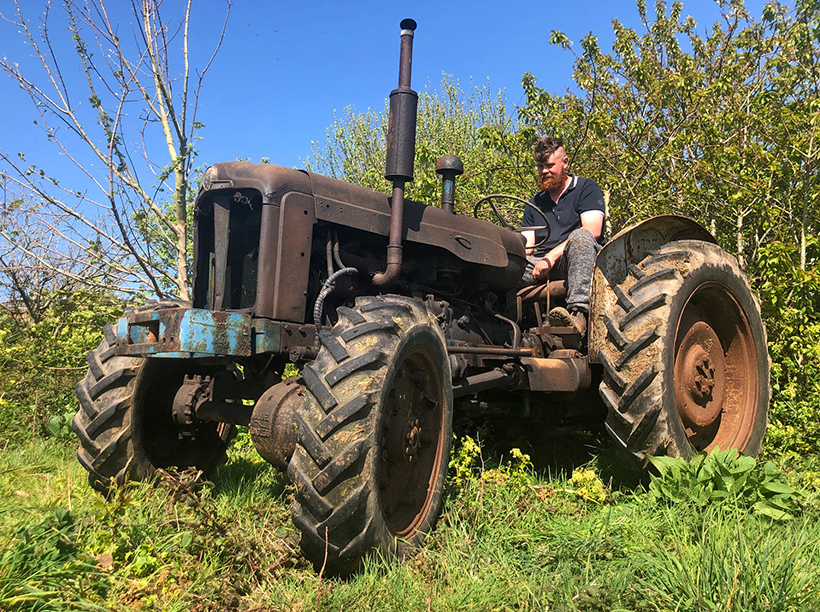
Alan Kelly’s Roadless conversion is based on a New Performance Major. It’s very much in its working clothes, and is pictured here with Jack Shadbolt on board.
Alan has long been a fan of all things Fordson, because they come in so many configurations and there are so many interesting variants available. At one time, Alan had 14 Roadless tractors but, today, he has just one, 1963-’64 machine in his personal collection.
“I keep getting asked if I will sell my Roadless,” he told me, “and I give people a high price because, deep down, I don’t really want it to go!” Alan uses his Roadless for field maintenance at home on his smallholding, though he is aware it’s capable of so much more. “I know they are excellent forestry tractors,” he says, “as they are much more manoeuvrable than the County Super-4; they have a better turning circle and are nimbler for working in between trees.
“A few years ago, I was offered a pair of these Roadless 4WD Fordsons for £2400 each, and I wish I had bought them. I’m kicking myself now as they would have been an excellent investment!”
ROADLESS TODAY
In 2007, John Bownes took over the business, and Roadless is now the registered trademark of John Bownes Ltd. The company has a vast catalogue of Roadless documents and records, and also has the original serial number books, so can trace exactly when each Roadless tractor was built, when it was sold, and to whom.
If you contact John Bownes with the serial number of your Roadless tractor, then its history can be researched and, for a small fee, this information can be sent to you on an official Roadless letterhead. See www.roadless.co.uk for further details.
For a money-saving subscription to Tractor & Farming Heritage magazine, simply click here





